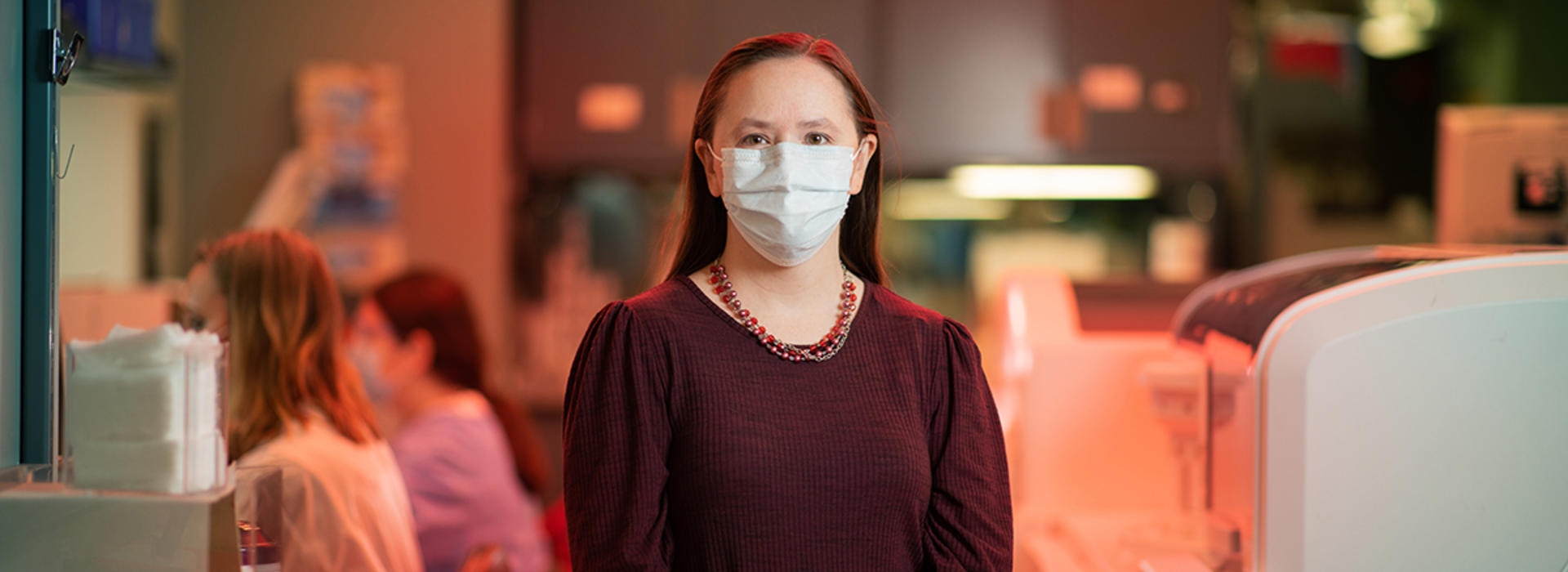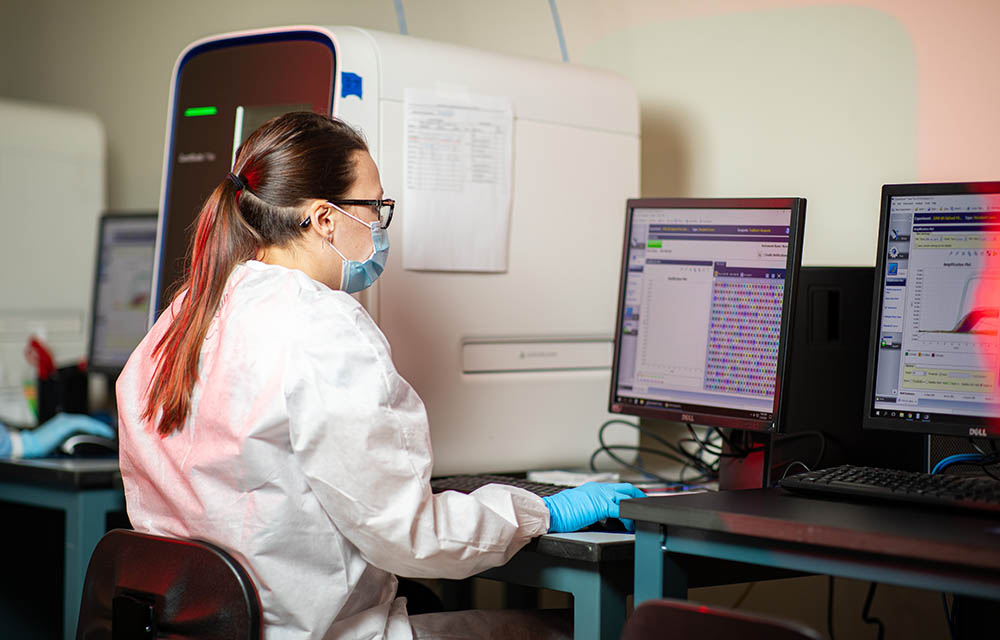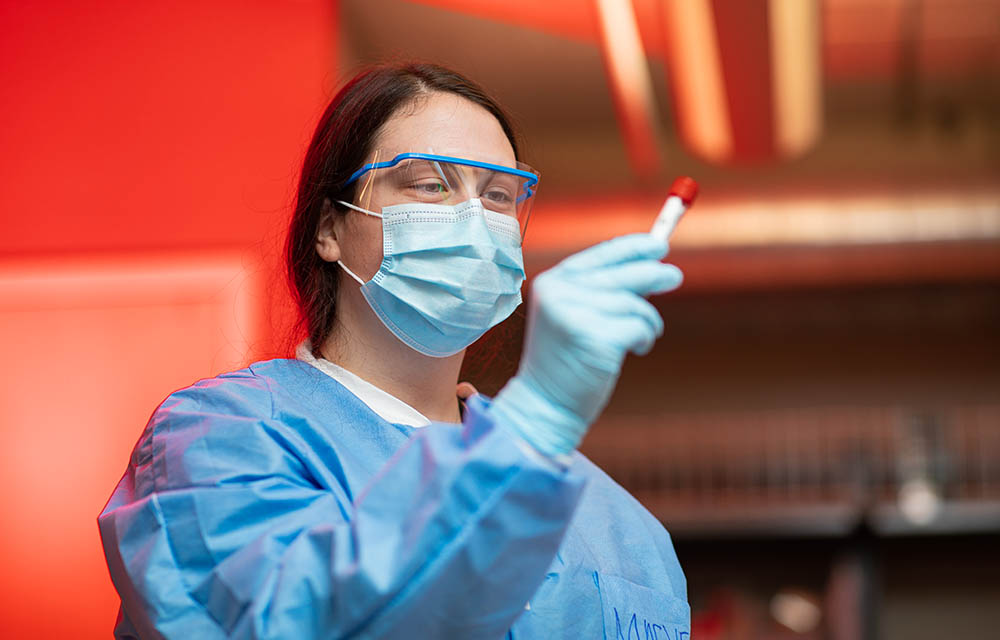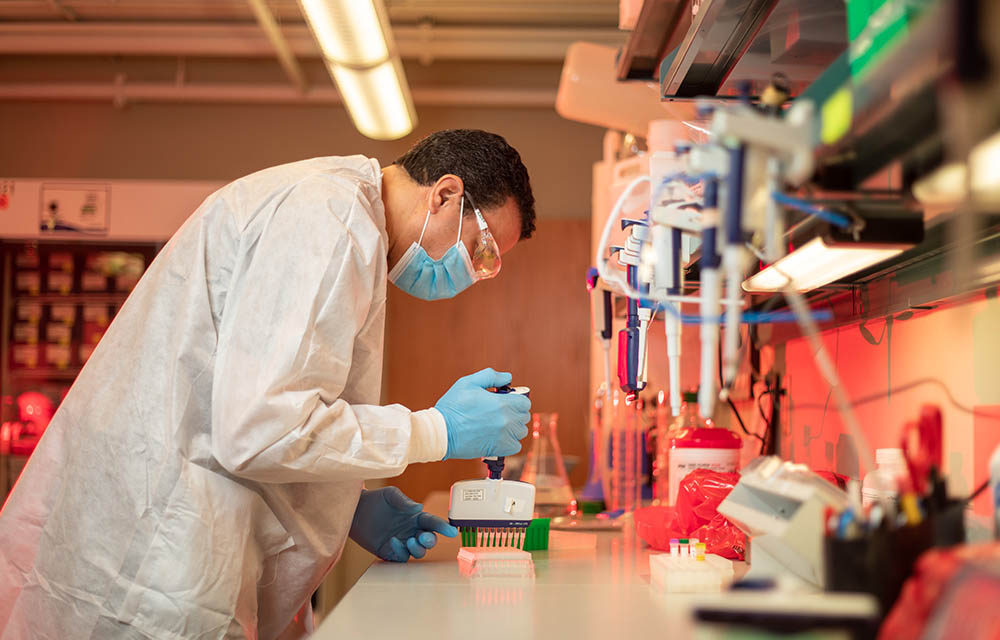
Three Ways to Prepare for the Next Pandemic
Three Ways to Prepare for the Next Pandemic
ARDL’s Utility to Minnesota Presents a New Model for Lab Operations
Read time: 4.5 minutes
Almost one year ago, as most communities enacted stay-at-home orders and hospitals rushed to action, an unsettling quiet plagued the halls of academic research labs that, unless they went to battle against COVID-19, needed to temporarily close up shop.
One of those labs at the University of Minnesota Medical School began to notice a swift drop in arriving samples. The Advanced Research and Diagnostic Laboratory (ARDL), which for 30 years has been one of a handful in the U.S. to offer clinical laboratory testing services to researchers, quickly realized the value of the slow-down in their 21,000-square-foot facility.
 “We normally get thousands of samples from all sorts of research institutions that are recruiting across the country, and then they send all of the samples to us to do testing at one facility,” says Amy Karger, MD, PhD, an associate professor in the Department of Laboratory Medicine and Pathology and director of COVID-19 testing at ARDL. “A lot of our activities were actually slowing down or stopped because research studies across the country were put on pause. That created this unique situation where we had a laboratory facility and highly trained staff who weren’t doing their usual job of research testing and were then available to work on COVID-19 testing and get that up and running in ARDL.”
“We normally get thousands of samples from all sorts of research institutions that are recruiting across the country, and then they send all of the samples to us to do testing at one facility,” says Amy Karger, MD, PhD, an associate professor in the Department of Laboratory Medicine and Pathology and director of COVID-19 testing at ARDL. “A lot of our activities were actually slowing down or stopped because research studies across the country were put on pause. That created this unique situation where we had a laboratory facility and highly trained staff who weren’t doing their usual job of research testing and were then available to work on COVID-19 testing and get that up and running in ARDL.”
And, they did. Within a few weeks after the start of the shutdown, ARDL, in collaboration with another research facility on campus, had developed two homegrown tests – a PCR and serology, or antibody, test – that helped supply some of Minnesota’s very first testing capabilities statewide. At their peak, they analyzed 10,000 samples per day. And, because of that early work and leadership in the field, ARDL is now one of four institutions serving as a Capacity Building Center for the Serological Sciences Network (SeroNet), a major component of the National Cancer Institute’s response to the COVID-19 pandemic to develop, validate, improve and implement serological testing and associated technologies.
The success, though, didn’t come without its challenges. Dr. Karger shares these and discusses three ways that fellow academic research laboratories can prepare to serve their state for the next pandemic or outbreak:
Build stronger collaborations now within your academic medicine institution between clinical and basic science researchers to ensure access to expertise and resources quickly when you need it.
Train your staff to do more than one testing method to overcome supply chain issues. And, work with your lab managers now to have a rapid hiring plan in place for the future.
Establish intra-state partnerships between research institutions and your state health department now and advocate for a plan, including additional space.
Build stronger collaborations now within your academic medicine institution between clinical and basic science researchers.
“The U of M Medical School and basic science researchers were somewhat separate before the pandemic. A lot of us haven’t really interacted with the basic science researchers, but this pandemic really brought a lot of us together,” Dr. Karger says.
 The homegrown PCR and serology tests the U of M Medical School deployed only came to fruition through unique partnerships and the awareness of certain expertise among the body of faculty. For example, Fang Li, PhD, in the College of Veterinary Medicine, had the know-how to produce the key ingredient needed for the serology test – a SARS-CoV-2 protein.
The homegrown PCR and serology tests the U of M Medical School deployed only came to fruition through unique partnerships and the awareness of certain expertise among the body of faculty. For example, Fang Li, PhD, in the College of Veterinary Medicine, had the know-how to produce the key ingredient needed for the serology test – a SARS-CoV-2 protein.
Basic science lab spaces that did need to close down cleared their space to make room for additional testing efforts, making it possible for Minnesota’s first statewide PCR testing efforts to launch within a few weeks after the state’s first-reported cases of COVID-19.
These same research labs were also able to provide a lot of the supplies and chemicals we needed for the PCR testing in the beginning and gave away extra PPE materials to our labs and hospitals,” Dr. Karger says. There was a lot of cross collaboration between the U of M Medical School and our basic science researchers to get this moving forward quickly.
Train your staff to do more than one testing method to overcome supply chain issues. And, have a rapid hiring plan.
Beyond the need for supplies, Dr. Karger said her team had to also quickly shift their mindset to meet demand. With thousands of COVID-19 samples pouring in day-after-day, all needing a quick answer in 48 hours or less, she recalls the sense of newfound pressure she and her team experienced.
“They wanted the results out as soon as possible, so we really had to shift our mindset from academically minded testing that didn’t really have a lot of time pressure associated with it to high-volume testing where we needed to do it as quickly as we possibly could,” Dr. Karger says. “That required a lot of training of staff to handle the thousands of samples that were coming through the door. It was a massive number of samples and boxes, just arriving one after the other. It was overwhelming.”
She encourages working with the laboratory manager to develop a rapid hiring plan – one that lays out how you might hire large amounts of people quickly while efficiently training them to perform the required tasks. In those training sessions, Dr. Karger says they taught each staff member how to complete one assay in a few different ways. This, she says, was key in overcoming supply chain issues.
“I think the labs that had the most trouble were the ones that were stuck with just one method or instrument, and then they were really at the mercy of a manufacturer. We validated our testing methods using a variety of different options for supplies, so that if something was short, we could turn to something else,” Dr. Karger says. “That does create some expertise in skills that we normally wouldn’t have developed in those staff. So, if we do ever run into a situation where we have barriers to getting work done in the lab, I imagine that our staff will be more equipped now to come up with multiple ways to do something based on this experience.”
Establish partnerships with your state health department now and advocate for a plan, including additional space.
 Dr. Karger recognizes that not every state has an ARDL-like facility, and she does credit part of their success to luck that they had this ready-to-use space, available staff and unique faculty expertise. Yet, she does think it’s possible for intra-state collaboration between academic research institutions and their state’s department of health to begin envisioning now how the two (or more) entities might work together to serve the state during a future pandemic or outbreak.
Dr. Karger recognizes that not every state has an ARDL-like facility, and she does credit part of their success to luck that they had this ready-to-use space, available staff and unique faculty expertise. Yet, she does think it’s possible for intra-state collaboration between academic research institutions and their state’s department of health to begin envisioning now how the two (or more) entities might work together to serve the state during a future pandemic or outbreak.
“Start with your state’s department of health and have a conversation about doing something coordinated,” Dr. Karger says. “We were fortunate in our state that they were the ones to initiate that conversation with us, and we were happy to jump on board. They helped establish this statewide testing command center that really helped the smaller labs and facilities connect with us and the Mayo Clinic, so that they could use us for testing. That coordination, on a statewide level, was really important.”
Should institutions reserve or build space for a pandemic preparedness lab? Dr. Karger says it’s a fair discussion to have with institutional leaders. Had ARDL not been available, 10,000 tests per day would be a dream, considering the clinical labs locally could only produce tests in the hundreds.
“But, space is at a premium everywhere,” Dr. Karger says. “That is a big logistical barrier that could prevent an academic institution from setting up an operation and truly serving their state in a critical way. We absolutely did need that extra space to do the 10,000 samples per day. I do believe that that is an issue for institutions to think about in terms of planning for future situations.”
To learn more about ARDL, visit this website.
U of M Medical School selected as Capacity Building Center for NCI Serology Sciences Network
The Department of Laboratory Medicine and Pathology has been selected as a Capacity Building Center for a new national network dedicated to serological, or antibody sciences. The new national Serological Sciences Network (SeroNet) is a major component of the National Cancer Institute’s (NCI) response to the COVID-19 pandemic and is included in an emergency Congressional appropriation of $306 million to NCI to develop, validate, improve and implement serological testing and associated technologies.
U-developed Antibody Test, Key Component in Reopening Minnesota
A second test for COVID-19, developed by University of Minnesota Medical School researchers, will play a role in the state’s plan to reopen Minnesota. The antibody test, known as an ELISA (enzyme-linked immunosorbent assay), developed rapidly from the lab bench to the clinic with the help of a unique group of collaborators—Dr. Karger, Marc Jenkins, PhD, and Fang Li, PhD.
U Researchers Orchestrate State’s Fastest On-Site Testing for COVID-19
Led by Sophia Yohe, MD, in the Department of Laboratory Medicine and Pathology, a small team of researchers and technicians transformed two buildings inside the U’s Biomedical Discovery District into Minnesota’s fourth on-site testing facility for COVID-19.